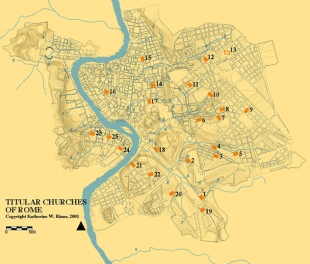Based on a comment from Nick, I’m going to post some thoughts on imputation I figured would be appropriate to form their own post. I’ll be interacting with his comments below.
“Classical Reformed theology teaches that the main reason for breaking away from Rome is that Rome rejected the Biblical teaching on Justification, specifically in regards to Jesus living a life of perfect obedience in our place, and Imputing this perfect obedience (Active Obedience of Christ) to us, so that we appear before God as if we had lived that life of perfect obedience.”
First, this is very simplistic and I think is unhelpful for setting the tone of the conversation. Consider Alister McGrath,
“The leading principle of the Reformation is generally considered to be its doctrine of justification. This is not, in fact, correct. It is certainly true that the articulus iusticationis is the leading feature of the theology of Martin Luther, and that his enormous influence over the evangelical faction within Germany and elsewhere inevitably led to this high estimation being reflected elsewhere. ..Nevertheless, as will become clear, in the present study, the origins of the Reformed church owe little, if anything, to Luther’s insights into justification.”
Its worth briefly noting the via moderna view that had develop during the 16th century. As McGrath puts it,
“Luther’s early interpretation of the iustitita dei was based upon the presuppostion that God, in his equity, rewarded the man who had done quod in se est with justifying grace, sine acceptione personarum. The divine judgment is based solely upon the divine recognition of an individual’s possessing a quality which God is under an obligation to reward…”
I won’t go into greater detail on this (McGrath gives a good overview), but it helps contextualize Luther’s theology in his theological environment, which I think is important for understanding the development of popularized Protestant theories of justification.
Moreover, I think you’re argument is trying to do too much. You claim to have delivered a knock-out punch, to all your foes, but many of them aren’t even in the ring with you on this point. Not all Protestants believe in imputation and not all Protestants who believe in imputation believe the same things about it. I’m not saying you haven’t pointed out important insights in specific areas, or that certain arguments for imputation are poor, but not all Protestants believe the same thing. This is why, analogously, my argument was never that my argument undermines Catholicism en toto, but rather, that it undercuts the specific arguments presented by conservative Catholic apologists.
Second, debates about the active obedience of Christ have raged from the Westminster Assembly to the present. There are and have been vociferous debates about the validity of the active of obedience of Christ, which is why the WCF (11.1) does not require a belief in the “active obedience of Christ” as articulated by some who believe Christ’s law obedience is reckoned as our own. Instead, the Confession merely makes the active obedience of Christ necessary for his passive obedience. You’ve correctly identified a flavor of Reformed Protestantism, but certainly not in its entirety–even in the confines of “conservative” Reformed theology. For further reading on the development in the Reformed tradition, you can reference a great book by William B. Evans “Imputation and Impartation.”
Then you said,
“But this view of Justification requires plain Biblical proof, otherwise it can hardly be a reason for starting a Reformation, by which the visible church was torn apart and Christians became bitterly divided. The problem is, there are no clear texts that speak of Imputation of Christ’s Righteouness (especially Active Obedience).”
I would again quibble with the terms you’ve set out. There was no monolithic perspective on justification or imputation in the 16th century–Catholic or Protestant. The reasons for the Reformation are multi-faceted, so even if some of the Reformers are wrong on imputation, there still may have been reason for Reformation. I say that not to get into the discussion, but just so you understand I do not believe your staging for the conversation is helpful.
Setting aside the issue of active obedience, since it is a tertiary issue and actually *not* at the heart of the Reformation, I’ll explore your claim that there are no texts that speak of an imputed, extrinsic righteousness.
Philippians 3 details how Paul had a righteousness according to the Old Covenant law, but he considers his own righteousness as dung, “εὑρεθῶ ἐν αὐτῷ μὴ ἔχων ἐμὴν δικαιοσύνην τὴν ἐκ νόμου ἀλλὰ τὴν διὰ πίστεως Χριστοῦ, τὴν ἐκ θεοῦ δικαιοσύνην ἐπὶ τῇ πίστει” (to be found in [Christ], not having my righteousness which [is] from the law, rather which [is] through faith in Christ, the righteousness of God through faith).
Paul’s own inherent righteousness is garbage while his extrinsic righteousness through faith in Christ is where he wants to be found (this positional language also denotes important extrinsic characteristics). And he makes a parenthetical comment consistent with much of his biblical argument in Romans–true righteousness comes through faith in God’s promises, not in obeying the Old Covenant laws.
In Romans 1 Paul makes an important point that he will continue to drive home throughout much of the first half of Romans. In verse 17 he defines the Gospel, which is for Jew and Gentile: “For in the gospel the righteousness of God is revealed—a righteousness that is by faith from first to last, just as it is written: “The righteous will live by faith.'”
This leads to a theological question, of what value is faith *without* the object? Whether one finds the notion of imputation a helpful theological category or not, surely faith itself does not do the saving because faith is lexically defined as trusting in another. Faith is an act of the will, and it is a *good* thing, but faith itself merely trusts in the object of faith.
How does one take hold of the righteousness of God (or the ‘covenant faithfulness’ of Jesus)? By faith (And this is justified by either taking πίστεως Ἰησοῦ Χριστοῦ objectively *or* merely taking Paul’s statement about it being for everyone who has faith εἰς πάντας τοὺς πιστεύοντας). As a result, no one can boast about their status (justified or in the covenant community) because it comes extrinsically. It’s rooted in God’s action in Christ. No works of the law are able to justify one before God, only faith. In fact, even one of the most righteous Jews was not reconciled to God by law-keeping.
That’s why in the beginning of Romans 4 Paul notes that Abraham was not justified by works of the law, but by his faith in God. At the end of Romans 4, Paul concludes his argument by stating that when we “believe in him who raised Jesus from the dead” our sins are forgiven and we are made “righteous.” Again, this is not activity I am involved it. My righteousness is extrinsic. It comes not within me, but it is outside of me and rests in Christ’s work for me. In other words, the story of Abraham being “counted” righteous by his faith in God foreshadows the reality that we also are counted righteous by trusting in God’s action on our behalf.
Similarly, 2 Corinthians 5 speaks to the theological concept of imputation. In verse 18 Paul explains we are new creations and, “All this if from God, who reconciled us to himself through Christ and gave us the ministry of reconciliation: that God was reconciling the world to himself in Christ( ἐν Χριστῷ), not counting ( μὴ λογιζόμενος) people’s sins against them. And he has committed to us the message of reconciliation. We are therefore Christ’s ambassadors, as though God were making his appeal through us. We implore you on Christ’s behalf: Be reconciled to God. God made him who had no sin to be sin for us (τὸν μὴ γνόντα ἁμαρτίαν ὑπὲρ ἡμῶν ἁμαρτίαν ἐποίησεν), so that in him we might become the righteousness of God. (δικαιοσύνη θεοῦ ἐν αὐτῷ)”
The ministry that the Apostle’s were given was specifically that God was not “counting their sins against them.” So while people had committed actual sin, Paul says those sounds are not “counted against them.” On what grounds? Well, God was reconciling the world to himself “ἐν Χριστῷ.” But what does Paul mean by that? The one ignorant of sin (“τὸν μὴ γνόντα ἁμαρτίαν” AKA Jesus), for our account (ὑπὲρ ἡμῶν), was made sin (“ἁμαρτίαν ἐποίησεν” [by God]). In this passage we see God not “imputing” sin to sinners and “making” one without sin a “sinner.” While lexically dissimilar, the use of ἐποίησεν in v.21 functions grammatically in a manner very similar to the use of λογιζόμενος in v.19.
Even N.T. Wright (an Anglican), who does not believe in imputation as a biblical category, concedes in Paul and the Faithfulness of God in footnote 309 “…2 Cor 5:21a in which the Messiah was ‘made to be sin for us’ and where something like the traditional ‘imputation’ (‘our’ sins being ‘imputed’ to the Messiah) is still appropriate.”
Continuing on, we could appeal to Galatians wherein Paul goes on in detail about the relationship between faith and works of the law. In Galatians 2, Paul explains the altercation with Peter and concludes “a person is not justified by the works of the law, but by faith in Jesus Christ” (Gal 2:16). All those in Christ Jesus are children of God through faith (3:26). And if one wants to argue for the subjective genitive here or elsewhere in Galatians (διὰ τῆς πίστεως ἐν Χριστῷ Ἰησοῦ) then we are all sons of God because of Christ’s faithfulness, in which case, something like imputation is functioning as Christ’s faithfulness imputes benefits to believers.
This is already becoming too long, and my time is short at the moment. I’ll conclude with a few additional thoughts:
- In the context of RCC/Protestant dialogue, imputation is *not* the linchpin for the entire “Protestant” theological edifice. Many Protestant biblical scholars reject imputation. As even you note in your article, there are even Reformed ministers who have serious reservations about imputation. This does not mean that imputation is unimportant or that I’m suggesting its unbiblical, rather, I think that protestants in good standing can question imputation.
- Even many of those questioning the imputation of Christ’s righteousness still maintain the eschatological and once-for-all nature of justification. I’ll quote N.T. Wright once more on this point,
…some have said that therefore the word ‘justification’ actually denotes the inner transformation which is effected by this indwelling [of the Spirit]. My negative response to this is not driven by any knee-jerk desire to maintain my protestant credentials. Those have long since been taken from me, whether rightly or wrongly…No: my response to the proposal to identify ‘justification’ with the spirit’s transformation is that this is not what the word means, either in itself or in its contexts. ‘Justification’ denotes the divine declaration. This ‘in the right’ is pronounced as an act of utter grace basis of the Messiah’s death…’Justification’ does not take place on the basis of any developed character-change. Nor does the word even denote the first beginnings of that, the work of the spirit by which someone calls the one God ‘Abba’ and believes in the risen Jesus. The word denotes the sovereign declaration of the covenant God. Nor do the adjective ‘righteous’ and the abstract noun ‘righteousness’ denote anything about the change of heart whose first flutterings produce that faith. They denote the ‘standing’ which the believer has from that moment on, on the basis of the divine declaration, as a full, forgiven member of the single people of the covenant God. And it is because of the spirit, working in this way, that Paul can argue throughout Romans 5-8 that the future verdict announced over the entire life will correspond to the present verdict that has been issued over nothing but pistis (Paul and the Faithfulness of God, pgs. 957-958).
3. Wright’s point here, consistent with the Protestant argument, speaks against Trent’s Sixth Session Chapter 10 & Canon XXIV. This is an important disagreement and one in which even if Wright disagrees with the Reformed on the imputation of Christ’s righteousness, he still agrees on the very important character of justification being by 1) faith alone and 2) being an eschatological, definitive once-for-all action. This doesn’t prove that anything Wright or Protestants say is correct, but it does show how even if one denies imputation (like Wright) he can still come down importantly on the side of the Reformers on justification.
These are some of my thoughts on the question of imputation. I find it a helpful category and that it explains much of the Pauline epistles, specifically Romans, Corinthians, Galatians, & Philippians. Other exegetical and theological arguments could be made, but for me, they are sufficient for me to conclude that imputation is an important biblical category. Nonetheless, even if one is to reject the “traditional” reading of these passages and adopt something like a New Perspective reading, I still believe the eschatological and definitive aspects of justification is an important corrective to errors in Tridentine theology. You’ve attempted to combine the two categories to show that if imputation is flawed, then so also is the Protestant understanding of justification. This is not true, however, which falsifies your argument against the entirety of Protestantism.








